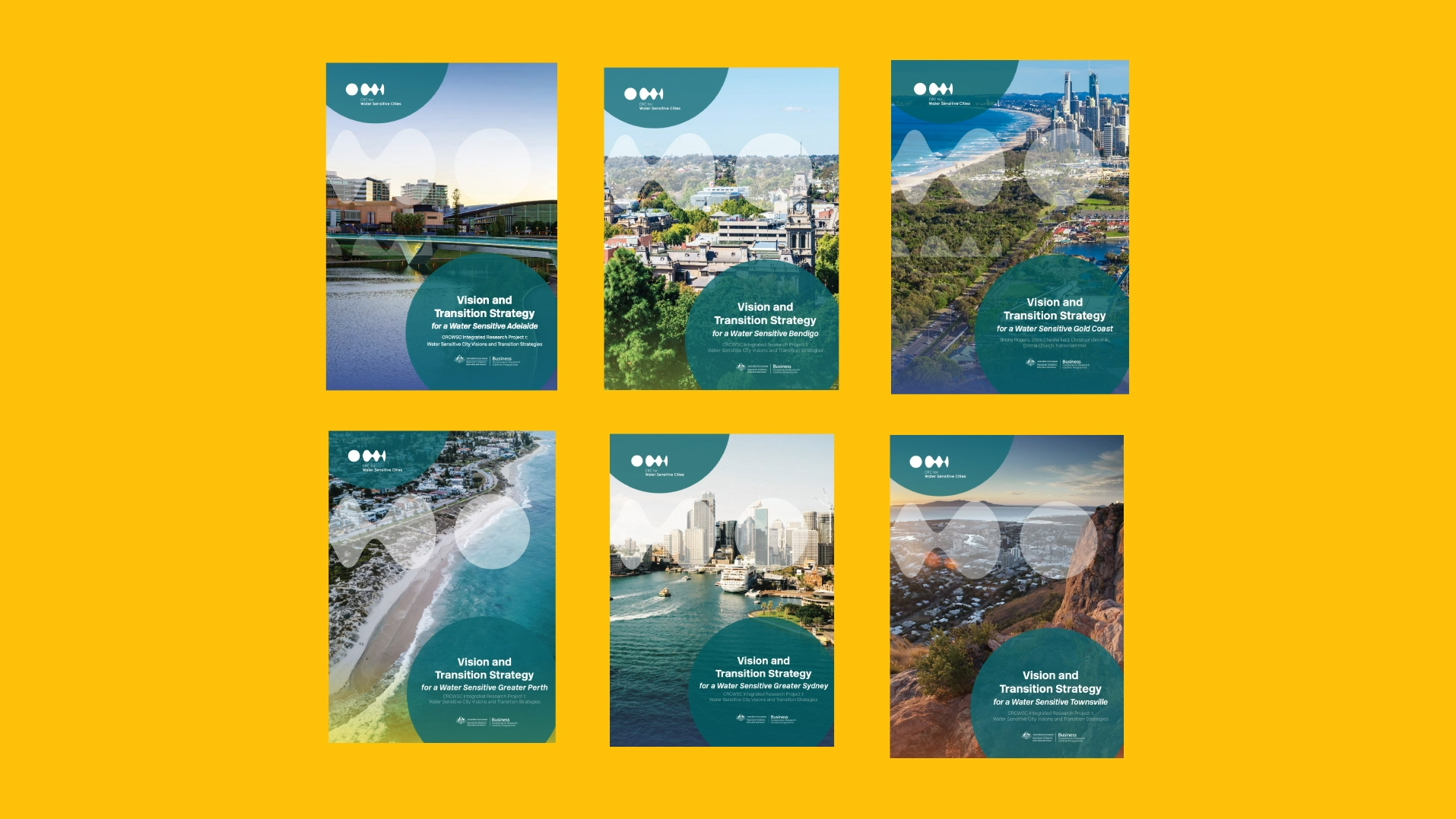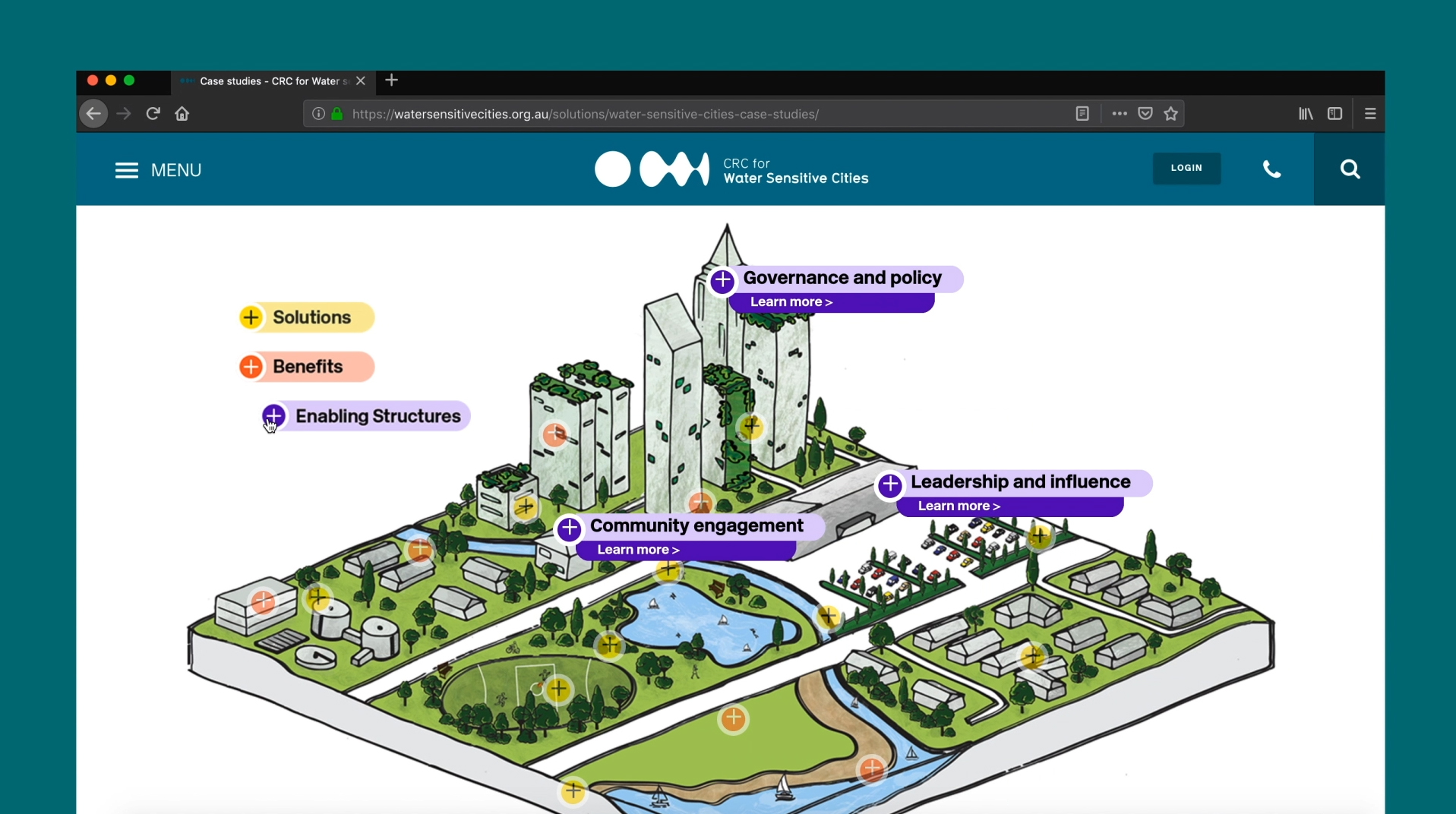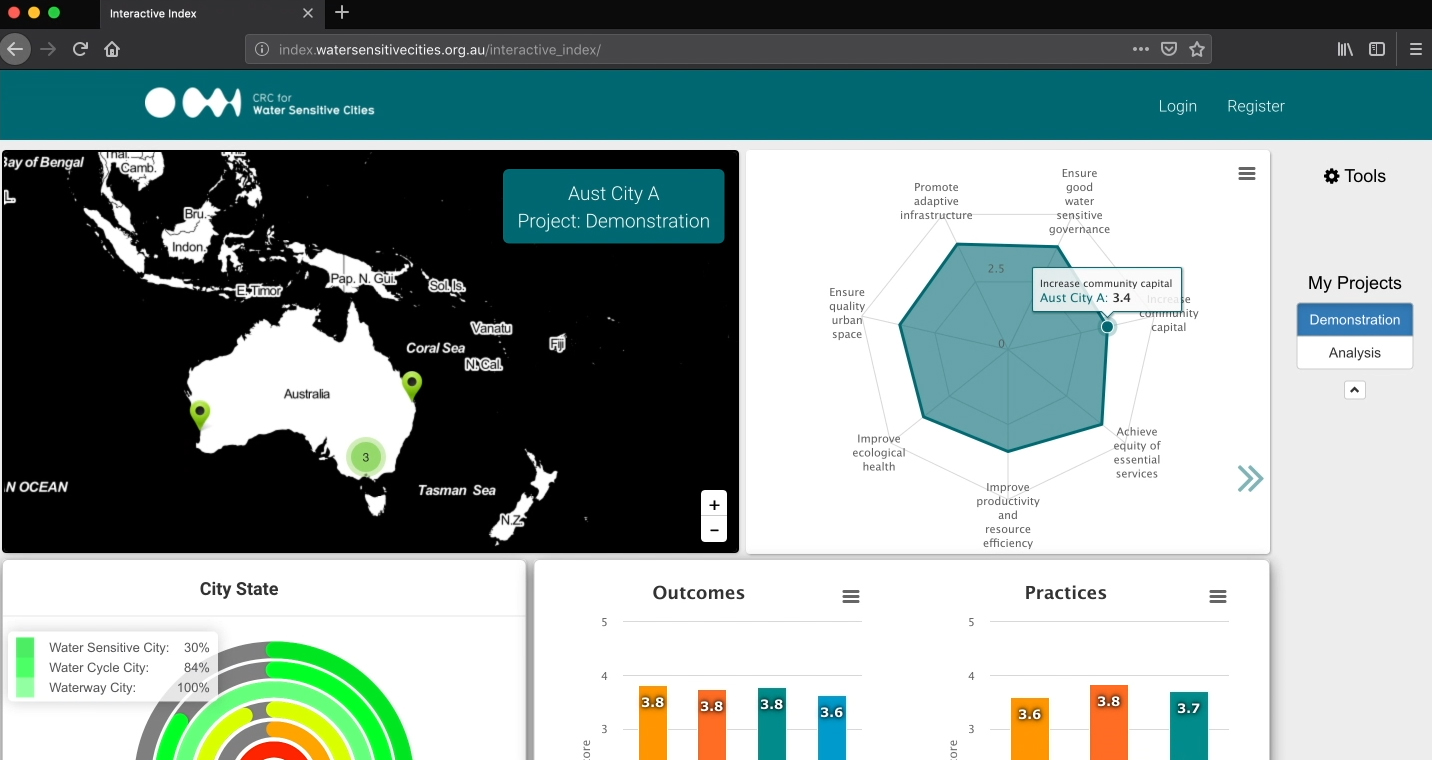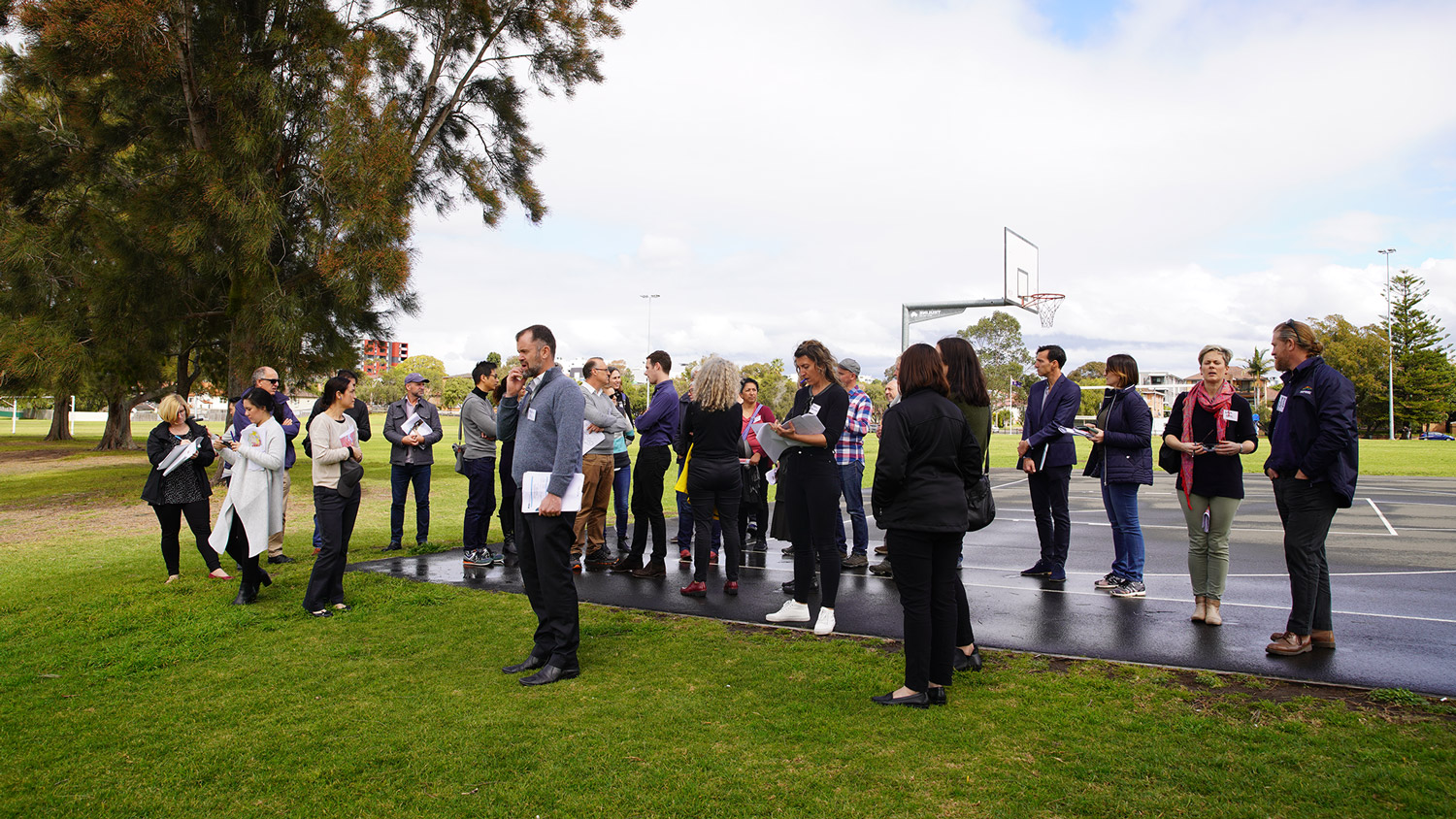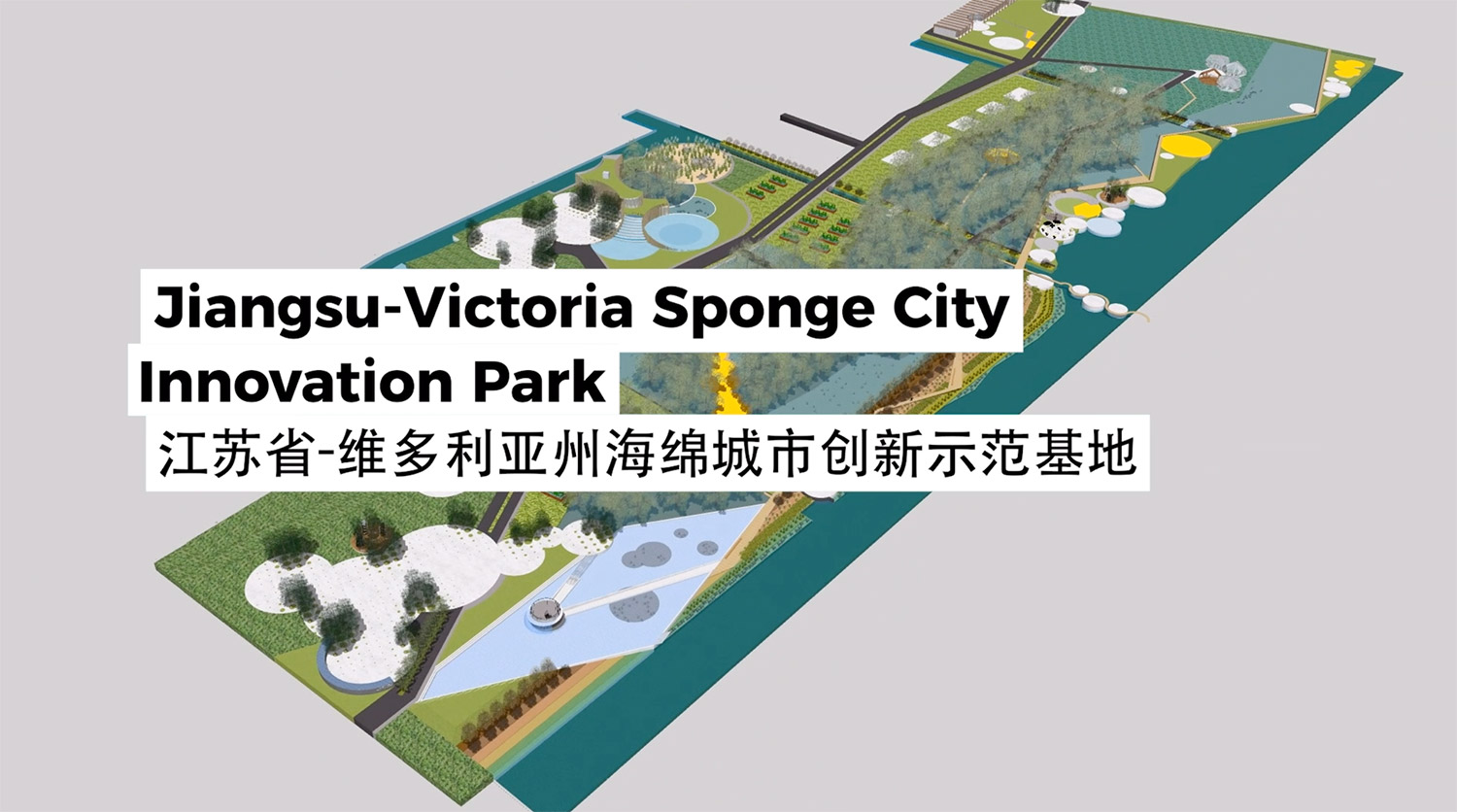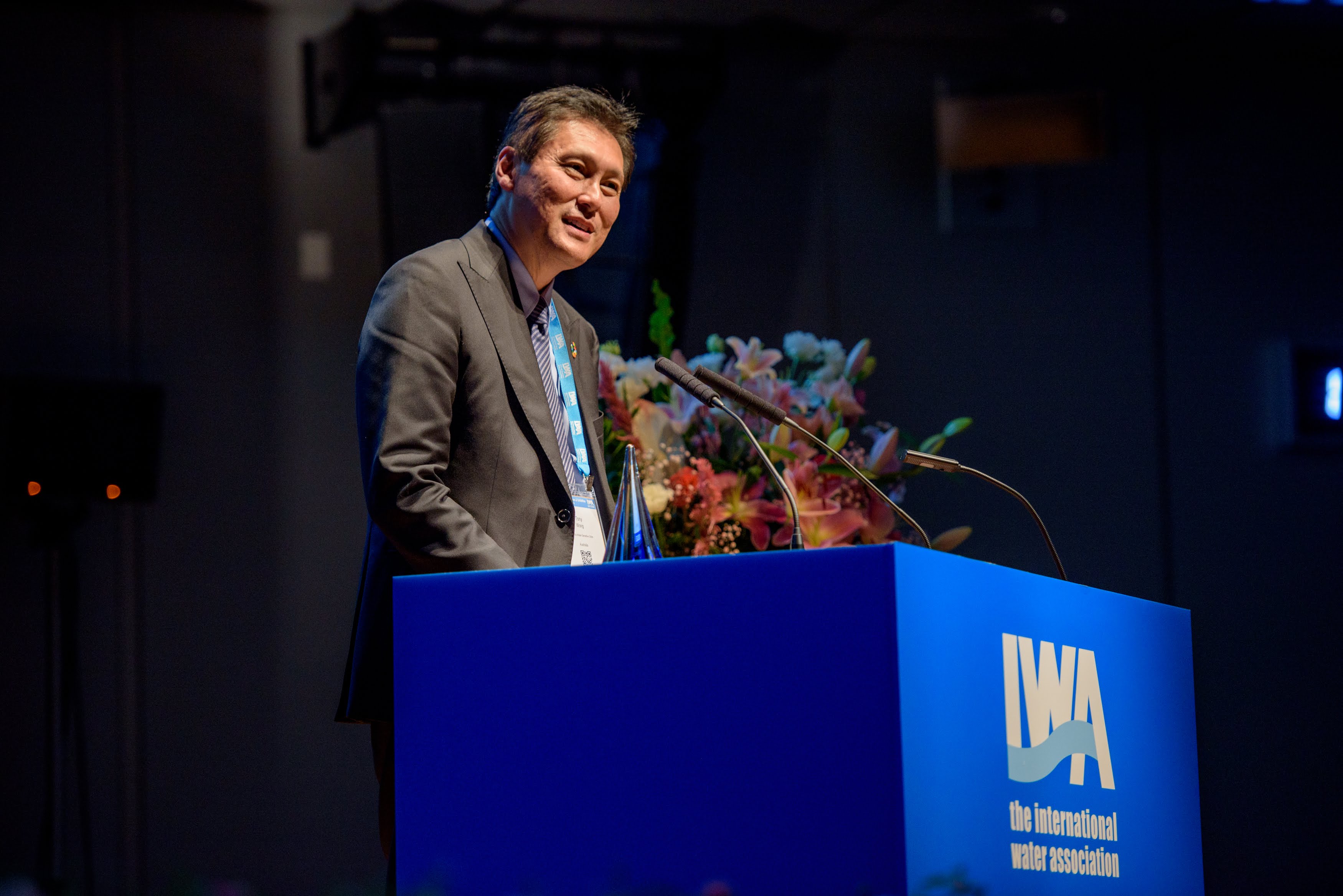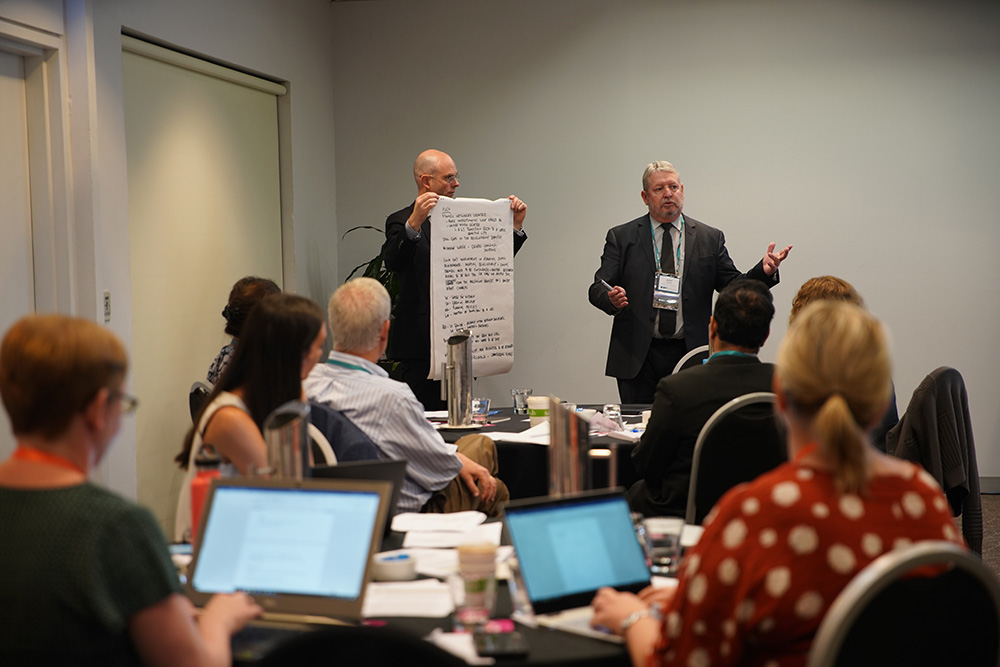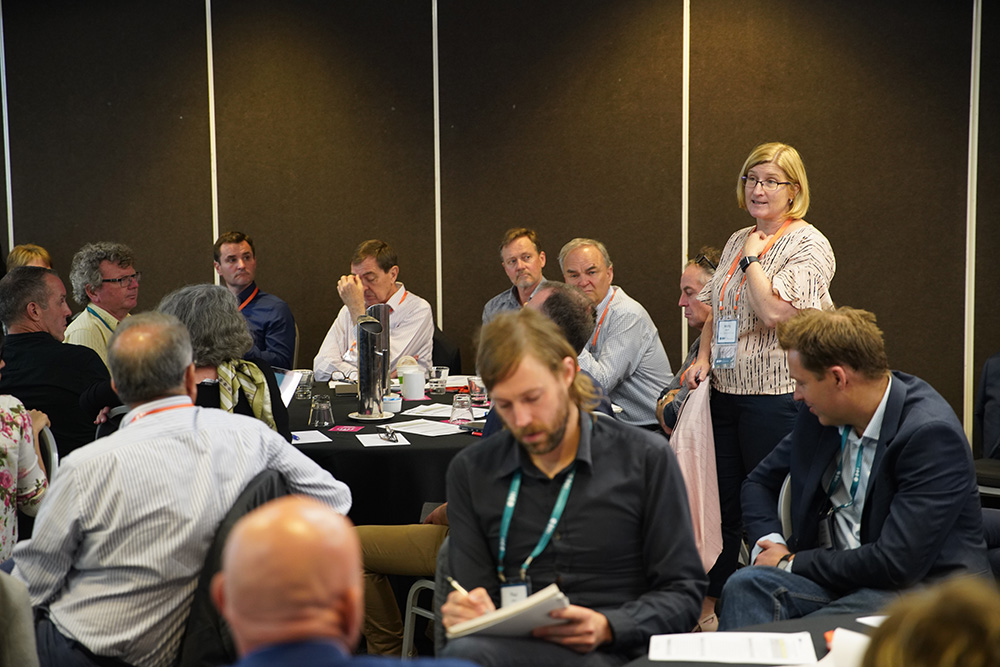Your contributions made 2018 another successful year
At the beginning of the year, I outlined an ambitious agenda for 2018. And thanks to the efforts of our Participants, partners and CRCWSC staff, we achieved our goals and more.
Take a look at our end-of-year video.
We showed our Water Sensitive Cities Transition Planning Process can be applied in any urban setting
Altogether, we created six vision and transition strategies, covering a range of climatic zones and seasonal rainfall patterns, in both metropolitan and regional urban settings. Working with many and varied stakeholders, we dealt with context-specific urban water challenges, and prepared strategies for different water sensitive city visions:
- Townsville (Zone 1, high humidity summer, warm winter; regional city)
- Gold Coast (Zone 2, warm humid summer, mild winter; regional city)
- Greater Sydney (Zones 5 and 6, warm to mild temperate climatic zones; capital city)
- Perth & Adelaide (Zone 5, warm temperate; capital cities)
- Bendigo (Zone 6, mild temperate; regional city).
Through these strategies, we demonstrated water sensitive concepts and principles are universal, but can be expressed and operationalised differently, depending on site context.
We launched our Knowledge Translation Platform
We undertook a highly successful nationwide Research Adoption Tour showcasing emerging outputs from Tranche 2 projects. This tour coincided with the launch of the CRCWSC web-based Knowledge Translation Platform, containing curated outputs from Tranche 1 projects. We categorised and organised over 700 outputs from our Tranche 1 activities according to the three thematic transition pathways of (i) enabling structures; (ii) on-ground practices and (iii) social-political considerations. We created an interactive interface, to make it easy for users to find and access information about water sensitive solutions, benefits and enabling structures. The Knowledge Translation Platform included our first series of 33 case studies. Over several years, we collaborated with project stakeholders to examine the drivers and innovations behind our projects, and most importantly, the lessons we and our partners learned along the way.
We commenced beta-testing new tools for decision makers
Several projects are developing tools to support balanced and systematic decision making and to provide evidence for business cases. We completed the Water Sensitive Cities Index tool and many of our commercial participants are using this tool to help their clients develop water sensitive cities investment strategies and implementation plans. To date, the Index tool has been applied to 25 cities and municipalities in Australia. We have also applied the tool to some of our international projects.
Our IRP2 team (Comprehensive economic evaluation framework) released beta-testing versions of several tools—the benefit cost analysis tool, the non market valuation tool and the transfer benefit tool—to help decision makers and practitioners identify and quantify economic, environmental and community values of investments in water sensitive practices and systems. Workshops in Perth and Melbourne helped significantly in engaging CRCWSC Participants early. They have played an invaluable role in the tool development and evaluation process—helping us refine these tools by testing their functionality, identifying any errors, and providing general feedback.
At the same time, our Tools and Products (TAP) program is developing an integrated set of platforms to support cities transitioning towards water sensitive futures. During the year, we worked with researchers and industry users to develop an early prototype of the Transition Dynamics Framework. And we are using case studies in Western Australia (Wanju), Victoria (Scotchman’s Creek), New South Wales (Dubbo) and Queensland (Oxley Creek) to test the Design Platform and Scenario Platform.
We ramped up our other T2 activities
While IRP1 and IRP2 are well-advanced and are close to completion, the Board approved the project scope for IRP3 (Guiding integrated urban and water planning) in early June. This project will explore and facilitate collaborative planning approaches that consider how urban form, built form and water system servicing can deliver water sensitive outcomes for urban development. We are building the project team, beginning detailed project planning and developing research case studies with partners. These research case studies will be a critical component of the project, serving to test, evaluate and improve the project’s key outputs.
Working with industry, we also identified case study sites for IRP4 (Water sensitive outcomes for infill developments)—Salisbury in South Australia, Knutsford in Western Australia and Norman Creek in Queensland. IRP4 aims to integrate urban design and urban water system modelling/optimisation, focusing on infill developments that are becoming an important feature of many of our larger cities. As well as starting the case studies, the research team developed a design typologies catalogue and released a beta-testing version of the water mass balance screening tool.
We took our water sensitive messages to the world
We worked with the Commonwealth and state governments and SME partners on projects that not only helped to create more water sensitive urban areas, but generated opportunities for our SME Participants to provide services in these overseas markets. These projects included:
- helping design Amaravati, Andhra Pradesh’s (in India) new capital city
- starting construction of the Jiangsu–Victoria Innovation Park in Kunshan, China
- supporting the water sensitive transition of two new cities in Jiangsu Province, China
- supporting the Revitalisation of Informal Settlements and their Environment (RISE) team, completing design works and starting construction of water sensitive interventions at the demonstration site in Makassar, Indonesia
- continuing as an Asia Development Bank knowledge partner, and strengthening our relationship with the World Bank.
We received industry accolades
The CRCWSC Tranche 1 project on the use of purple phototrophic bacteria (PPB) for resource recovery from wastewater project won the National Research Innovation Award at the 2018 Australian Water Awards. This award recognises projects that encourage novel approaches to water resources management. This novel approach to treating wastewater is a prime example of the benefits of collaboration—working with the CRCWSC gave researchers access to industry partners, which resulted in research that is directly useful to industry.
And I was honoured to receive the International Water Association’s Global Water Award for 2018, at the World Water Congress in Tokyo. This prestigious award recognises significant collaboration over the past 30 years, to create an integrated cross-disciplinary approach to managing urban water: from the social to the technical, from engineering innovations to nature-based solutions, using urban design as the integrative platform. I believe genuine collaboration is the key to solving many of the global challenges we face, and I am very honoured to have worked with many colleagues to address some of today’s most urgent global water challenges. I’d like to acknowledge some of my most significant collaborators—Dr Peter Breen, Professor Rebekah Brown and Professor Ana Deletic. I hope the award will give the water sensitive approach greater impetus for its widespread global adoption.
We are thinking about what comes next
Discussions with our Essential Participants Reference Group at the beginning of the year confirmed there was an appetite for a Tranche 3 program. With an eye to the future, we established the Water Sensitive Cities Institute this year. The Institute is a social enterprise that will work with our partners to support the growing demand for WSC expertise.
This wholly-owned subsidiary company is one option for ensuring the CRCWSC leaves an enduring legacy beyond 2021. Another option is a new CRC entity. Already, we’ve engaged with Participants, the Commonwealth Government and other interested parties about our transition plan.
A two-day workshop in Melbourne highlighted the areas where Participants think there is still work to do. Specifically, there is more work to do in facilitating and accelerating the mainstreaming of water sensitive cities practices in Australian cities and towns, by harnessing the following emerging opportunities:
- urbanisation and intensification
- digital technologies
- community activation and empowerment
- collaborative and innovative governance
- Aboriginal knowledge and values.
We will keep working with Participants and other stakeholders to develop a research program around these themes. If we secure enough interest, we will prepare a bid for round 21 CRC funding.
I’m looking forward to 2019
We are already planning a busy year for 2019. A highlight will be our 4th conference 26–28 March in Brisbane. At our last conference in Perth, 88 per cent of participants reported it to be a ‘very high/high’ quality conference. The Brisbane conference is shaping up to be even better.
I most sincerely thank all our Participant organisations and individual officers representing them for their continued and enthusiastic support of our work. Most importantly, I am indebted to the CRCWSC Team for their hard work and dedication.
I wish you all a safe and happy end-of-year break.
Tony Wong
Chief Executive
CRC for Water Sensitive Cities
